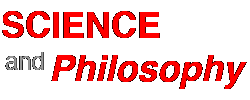Danielson, Dennis R., Editor the Book of the Cosmos, Perseus Publishing, Cambridge, MA, 2000 [abridged — 550 words]—observations by the greatest naked-eye astronomer
SOURCE: Tycho Brahe, De Nova Stella, trans. John H. Walden, in A Source Book in Astronomy, ed. Harlow Shapley and Helen E. Howarth, New York: McGraw-Hill, 1929.
Last year [1572], in the month of November, on the eleventh day of that month, in the evening, after sunset, when according to my habit I was contemplating the stars in a clear sky, I noticed that a new and unusual star, surpassing the other stars in brilliancy, was shining almost directly above my head. And since I had almost from boyhood known all the stars of the heavens perfectly . . . it was quite evident to me that there had never before been any star in that place in the sky, even the smallest, to say nothing of a star so conspicuously bright as this. I was so astonished at this sight that I was not ashamed to doubt the trustworthiness of my own eyes.
But when I observed that others, too, on having the place pointed out to them, could see that there was really a star there, I had no further doubts. A miracle indeed… For all philosophers agree, and facts clearly prove it to be the case, that in the ethereal region of the celestial world no change, in the way either of generation or of corruption, takes place; but that the heavens and the celestial bodies in the heavens are without increase or diminution, and that they undergo no alteration, either in number or in size or in light or in any other respect; that they always remain the same, like unto themselves in all respects, no years wearing them away. Furthermore, the observations of all the founders of science, made some thousands of years ago, testify that all the stars have always retained the same number, position, order, motion, and size as they are found, by careful observation on the part of those who take delight in heavenly phenomena…
[Observation shows] this new star is neither in the region of the elements, below the moon, nor among the orbits of the seven wandering stars, but it is in the eighth sphere, among the other fixed stars, which was what we had to prove. Hence it follows that it is not some peculiar kind of comet or some other kind of fiery meteor become visible. For none of these are generated in the heavens themselves, but they are below the moon, in the upper region of the air as all philosophers testify…
It does not follow that this star is a kind of comet; first, by reason of its very form, which is the same as the form of the real stars and different from the form of all the comets hitherto seen, and then because, in such a length of time, it advances neither latitudinally nor longitudinally by any motion of its own, as comets have been observed to do. For, although these sometimes seem to remain in one place several days, still, when the observation is made carefully by exact instruments, they are seen not to keep the same position for so very long or so very exactly.
I conclude, therefore, that this star is not some kind of comet or fiery meteor whether these be generated beneath the moon or above the moon, but that it is a star shining in the firmament itself—one that has never previously been seen before our time, in any age since the beginning of the world.


